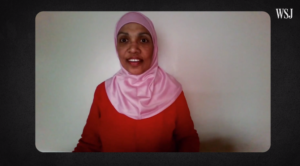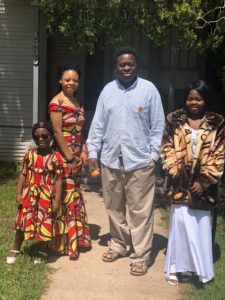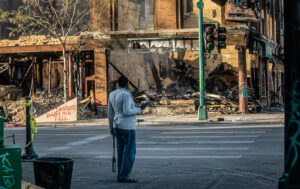Who do you think?
As the Chinese virus tanks our economy, it will be those of you still able to pay taxes! Either local tax dollars will go directly to the refugees, or local landlords will get bailouts (your tax dollars too).
Over the years I’ve watched landlord sharks seek out refugee tenants often working closely with federal refugee contractors and subcontractors in Democrat-run cities, but that whole system of cronyism could be crashing as we speak thanks to the Trump administration turning off the refugee spigot and the Chinese virus creating mass unemployment for the mostly low-skilled workers that have poured into the US as cheap refugee labor in the last few decades.
Will we soon see large numbers of refugees among the homeless, maybe.
This story in the Wall Street Journal today brought all of this to mind because I have been seeing stories here and there about how refugees are getting local financial assistance (with your money through local government agencies) when we have been promised for decades that the federal government bears the entire financial burden of refugee resettlement (NOT!).
I don’t have a subscription to the WSJ, but how great is this, the WSJ has a video with their story headlined:
Eviction Looms for Millions of Americans Who Can’t Afford Rent

WASHINGTON—Millions of Americans who have missed rent payments due to the coronavirus pandemic could be at risk of being evicted in the coming months unless government measures to protect them are extended, economists and housing experts say.
Nearly 12 million adults live in households that missed their last rent payment, and 23 million have little or no confidence in their ability to make the next one, according to weekly Census Bureau data.
Who are the people who mostly can’t pay rent, I bet a large percentage are immigrants of all stripes who are losing work in the service industry and in food processing. Can you say meatpackers!
Look around where you live and I will bet you find bailouts for immigrants coming from local tax dollars. In just a couple minutes of searching I found this one for Illinois.
IDHS COVID-19 Resources for Immigrants and Refugees
See who gets to distribute the money in Illinois—radical Leftist groups like the Illinois Coalition for Immigrant and Refugee Rights (ICIRR)—so that the needy immigrants then see who they are beholden to! And, it is not you, the taxpayer!
Just a reminder that back in the heyday of the Obama administration Democrat mayors were squawking to Obama and telling him they wanted MORE refugees (100,000 at least) especially the Syrians saying their cities needed many more poor, uneducated citizens who would eventually vote for more Dems.
NO, they weren’t that truthful, they said they needed more refugees to help their cities grow into economic boom towns (to benefit landlords and the Chamber of Commerce). Well, no they didn’t say that exactly either, they just tried to make it look like they are humanitarians seeking to help the world’s less fortunate.
So let’s take a trip down memory lane and see which mayors were begging for more refugees—refugees who are now down and out.
Story from 2015:
18 US Mayors tell Obama: We want MORE Syrian (Muslim) refugees!
Here are the mayors (some may still be in office), but even if they aren’t whoever took over the mayoral job since 2015 is, you can be sure, of the same ilk…
We want over 100,000 refugees a year!
Ed Pawlowski, Mayor of Allentown, PA
Stephanie Rawlings-Blake, Mayor of Baltimore, MD
Martin J. Walsh, Mayor of Boston, MA
James Diossa, Mayor of Central Falls, RI
Mark Kleinschmidt, Mayor of Chapel Hill, NC
Rahm Emanuel, Mayor of Chicago, IL
Edward Terry, Mayor of Clarkston, GA
Nan Whaley, Mayor of Dayton, OH
Domenick Stampone, Mayor of Haledon, NJ
Pedro E. Segarra, Mayor of Hartford, CT
Eric Garcetti, Mayor of Los Angeles, CA
Betsy Hodges, Mayor of Minneapolis, MN
Bill de Blasio, Mayor of New York City, NY
Jose Torres, Mayor of Paterson, NJ
William Peduto, Mayor of Pittsburgh, PA
Javier Gonzales, Mayor of Santa Fe, NM
Francis G. Slay, Mayor of St. Louis, MO
Stephanie A. Miner, Mayor of Syracuse, NY
Obama gave them almost as many as they wanted in fiscal year 2016 as he was walking out the door—almost 85,000 from 79 countries.
If you live in a Democrat-run city, you need to think about the possibility that your city could see more homelessness, strife and crime in the coming months, so please take time now and prepare for your family’s safety and well-being. Consider moving!

 According to the Refugee Processing Center, the US State Department and its contractors have ‘welcomed’ 61,000 refugees (as of yesterday!) from the DR Congo since
According to the Refugee Processing Center, the US State Department and its contractors have ‘welcomed’ 61,000 refugees (as of yesterday!) from the DR Congo since


 Siyad Matan, 21, is charged with rape and kidnapping, according to online court records.
Siyad Matan, 21, is charged with rape and kidnapping, according to online court records.



